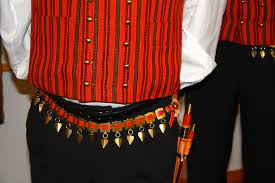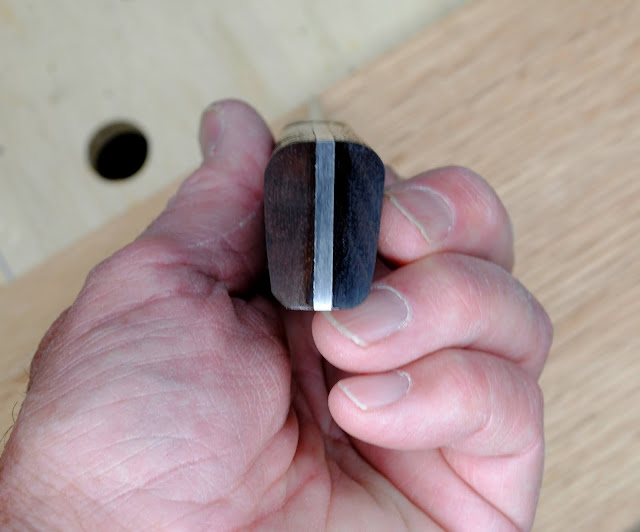Iisakki Järvenpää Puukko
I recently picked up a lovely dual Finnish
puukko set made by Iisakki Järvenpää Osakeyhtiö. The puukko set is a traditional dress knife pair
with a painted red handle and brass fittings.
The two blades are engraved with the founder's signature, Iisakki
Järvenpää.
I have recently discovered an interest in puukkos. I admire the refinement and practicality of a knife designed to survive in the brutal arctic environment.
 |
| A Puukko by Iisakki Järvenpää Osakeyhtiö |
A puukko is a general-purpose belt knife with a single curved cutting edge, solid hidden tang, and usually a flat spine. Military models of puukkos have been popular in the Russian criminal underworld under the name "Finnish knife" or finka since the 20th century.
Puukkos don’t have a ricasso (a section
of the unsharpened blade nearest the handle) because this is where the most
power can be applied. While finger guards
are uncommon (it is a cutting tool, not a stabbing weapon), puukkos intended to
be used in wet or slippery environments will have some form of guard or grip
enhancement carved into the handle.
The short knife is 5.75 inches
long, while the larger one is about 8.5 inches.
They occupy a leather and brass sheath.
The front is partially painted/coated in red to match the knife's grip.
This set appears to be part of traditional ethnic dress, needing only a Helavyö belt. The Helavyö is a leather belt decorated with several metal plates (or "hela"s). The belt is an accessory worn by men and women in traditional garb but only by men in non-Karelian attire.
 |
| Traditional dress with Helavyö belt and knife set |
The Karelian people are from an area in Northern Europe with historical significance for Russia, Finland, and Sweden. Often, a trinket of some shape hangs from each metal plate. The pendants are a pretty decoration; they show off the wearer's wealth. As a bonus, they are reported to keep the devil away.
 |
| Non-Traditional dress |
The company’s founder was Iisakki Järvenpää. He was born on January 7, 1859. From an early age, Iisakki was curious and thirsty to learn everything new. He practiced his reading and writing skills on his own initiative. While writing, he practiced not only the writing skill itself but also his penmanship. His attraction to uncompromising and meticulous visuals is reflected in his knives and writing. Iisak's signature is the company logo.
 |
The Iisakki Järvenpää Company was founded in 1879 and is the largest manufacturer of knives in Kauhava, Finland, a well-known town with a long and rich history of knife making. He had to learn everything from forging to metal polishing.
Self-taught, Järvenpää made simple
work knives, but in 1888 he made a gift knife for the hereditary prince of
Russia and the future emperor Nicholas II.
Because of the gift knives' impact,
Iisakki received the title Keisari's knifesmith, which was entered in the
church's books in 1889. Keisari's blades
had the lion coat of Finland carved into the handle and the emperor's crown on
top of a lion. The imperial thanks from future
emperor Nicholas II received a lot of attention in newspapers nationwide, which
led to a widespread increase in the demand for Iisakki’s knives.
Despite this success, his knife business grew slowly. Wanting more for his family, Iisakki gave up 20 years as an independent craftsman and became a foreman at the newly founded knife factory in Kauhava. Discovering the company had lied to him about benefits, he resigned from his position and re-established his own knife shop on February 15, 1904. From this point, Iisakki's company became known as Iisakki Järvenpää Osakeyhtiö (Limited Company).
 |
| The larger Puukko with signature in the blade |
Any errors are from my
misunderstanding of the translated Finnish.
















